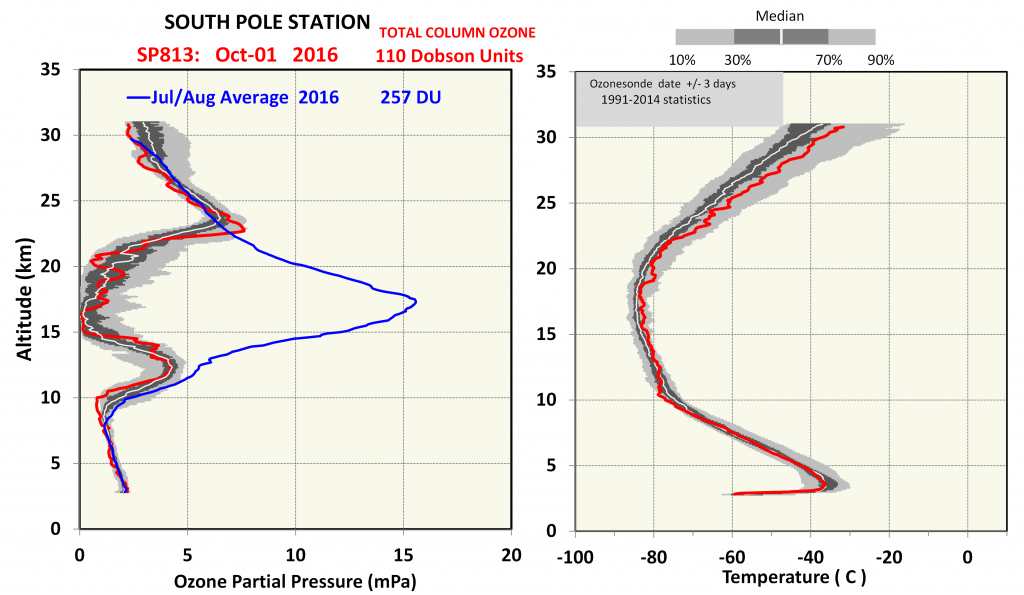The 2016 formation of the Antarctic Ozone Hole turned out to be fairly “average.” After 2015, where an incredibly stable polar vortex held the depletion region together well in to December, NOAA scientist were curious how 2016 would progress. Although the vortex remained fairly stable and circular, the depletion region never quite reached the size seen last year. With a low measurement from the South Pole of 110DU on October 1, the depletion region has now begun a slow, methodical return to normal levels.

Total column ozone measurements for the past three years plotted on top of the historical min/max values.

Vertical profile from the lowest total column ozone measurement on October 1, 2016. When compared to the blue line representing the pre-depletion average, it is clear how much ozone has been removed from the ozone layer region.

The most recent profile from a balloon launched on October 23, 2016. Though the ozone layer remains depleted for now, ozone from outside of the vortex has now begun to force its way back above Antarctica from above as seen in the enhanced levels of ozone at the top of the profile. This is a typical occurrence as the vortex begins to weaken. Soon the vortex will break apart, stratospheric temperatures will continue to rise, and the hole will fill back in until next year’s formation.
I have also updated the video compilation of every South Pole ozonesonde launch of 2016 up to the most recent profile sounding on October 23, 2016. The video better visualizes the mechanics of the ozone layer above the South Pole and where exactly all of this destruction is taking place.
